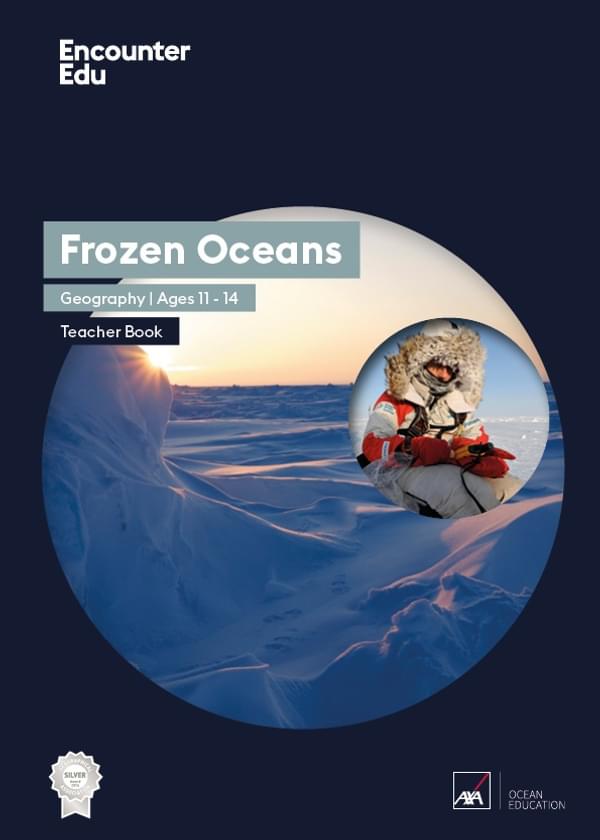How to write geographical descriptions
Writing extended descriptions is a core skill for geography students. There are a range of opportunities for students to write longer pieces of work throughout the Frozen Oceans Geography 11-14 Unit.
- Lesson 1: diary entry on first arriving in the Arctic
- Lesson 2: blog post about the Arctic Ocean and sea ice
- Lesson 5: argue how the Arctic should be governed
- Lesson 7: article on the importance of the oceans
- Lesson 7: job application to join a polar expedition
This Subject Update focuses on developing skills for writing geographical descriptions based on the blog post about the Arctic Ocean and sea ice in Lesson 2.
Techniques for developing literacy skills
The lesson uses five main techniques to develop literacy skills:
- Writing for a purpose: the blog post activity has an explicit purpose of explaining a remote environment to a youth audience.
- Writing for an external audience: students are motivated by writing for audiences other than their teacher.
- Providing a range of source material: a range of photos, video and written materials, alongside useful websites are available to suit students of all abilities.
- Scaffolding extended writing: the extended writing exercise is broken down into four sections and a writing frame is provided.
- Modelling extended writing: each section is then modelled on a separate slide.
Progression in writing geographical descriptions
Describing location
- Uses one place or scale
Example: the Arctic Ocean is at the top of the world. - Uses two places or scales / Uses simple directional language
Example: the Arctic Ocean is the large body of water north of the Arctic Circle. - + uses two or more nearby features
Example: the Arctic Ocean is the large body of water to the north of Canada, Norway and Russia. - + uses more accurate directional language
Example: the Arctic Ocean is the large body of water surrounding the North Pole. It is surrounded by six countries, with Canada, Greenland Iceland and the USA in the western hemisphere, and Norway and Russia in the eastern hemisphere. - + with the use of figures
Example: the Arctic Ocean is the large body of water north of the Arctic Circle, covering 14 million square kilometres. It is surrounded by six countries, with Canada, Greenland Iceland and the USA in the western hemisphere, and Norway and Russia in the eastern hemisphere.
Describing conditions
- Simple statement describing general conditions
Example: the Arctic Ocean is covered in snow and ice. - + describes seasonal changes
Example: in the winter, almost all the Arctic Ocean is covered in sea ice. In the summer, the amount of sea ice reduces. - + uses figures to describe seasonal changes
Example: in the winter, the sea ice extent is 14 million square kilometres. In the summer, this reduces to 4.4 million square kilometres. NB these are 2015 figures. - + giving reasons for seasonal changes
Example:sSea ice forms during the winter when temperatures are on average
-40°C, and then melts in the summer when the temperature rises to an average range of -10°C to +10°C. - + describing longer trends in the environment
Example: scientists have detected a long term trend in the reduction of summer sea ice because of warming in the Arctic.
Describing physical features
- Simple statement describing physical features
Example: if you walked across the Arctic Ocean, you would see a lot of different kinds of ice and snow. - + one described example
Example: You might encounter pressure ridges, which is where two pieces of sea ice push together to create a ridge of ice rubble, sometimes five metres high. - + two of more described examples
Example: there might also be gaps of open water between sections of ice, known as leads, which you would have to swim across. - + comparison to local area
Example: the sea in Arctic is very different from the sea in Britain, because so much of it is frozen and you can ‘walk on water’.
Describing importance of a place
- List one reason
Example: the Arctic Ocean provides a habitat for animals such as the polar bear. - List two or more reasons
Example: sea ice formation in the Arctic helps to regulate the climate for north west Europe. - List two or more reasons
Example: polar bears rely on sea ice for hunting and breeding. The sea ice is also important as the white surface reflects the sun’s energy, whereas the black ocean absorbs the sun’s energy contributing to more warming. - + an opposing view
Example: some people think that the melting sea ice offers opportunities for oil and gas extraction as well as for shipping. - + evaluate different views
Example: changes in the Arctic could have consequences for the climate and conditions in other parts of the world. This means that it is important to protect the Arctic Ocean, rather than looking to exploit its resources.
